Why are POE security cameras better for a reliable network?
In today's world, security cameras play a crucial role in monitoring and protecting our homes, businesses, and public spaces.
When it comes to ensuring a reliable network for surveillance systems, Power over Ethernet (PoE) security cameras emerge as a superior choice than the traditional security cameras.
By combining power and data transmission over a single Ethernet cable, PoE cameras eliminate the need for separate power wires, simplify installation, and enhance network stability.
With their ability to provide uninterrupted power supply, centralized management, and easy integration into existing network, PoE security cameras stand out as a reliable and efficient solution for maintaining a robust surveillance network.

What are POE security camera?
POE cameras are type IP cameras(shares data over an IP network) that are based on POE technology.
In POE technology(Power over Ethernet) a single Ethernet cable is assigned to provide network(data transmission) as well as power supply (current) to the cameras or other POE devices.
POE security cameras offer several advantages that contribute to a more reliable network:
-
Effective Power and Data Transmission:
A POE camera does not require a separate power supply since it receives power directly from a POE switch or injector through an Ethernet cable. As a result, installation is simplified and fewer cables are required, thereby saving money.
Network switches converts high voltage power supply into required input voltages of the devices(cameras).Power over Ethernet camera systems provides a stable power supply throughout their lifetime, preventing power fluctuations and short circuits.
POE networks can also work with backup power supplies, such as UPSs.
-
Flexibility:
PoE networks can easily accommodate the addition of new cameras. As long as the PoE switch or injector has available power capacity & extra ports, multiple cameras can be connected with a single ethernet wire.
POE cameras can be easily installed and relocated since they don't rely on a power source nearby. This offers flexibility in camera placement and makes it easier to expand or reconfigure a surveillance system.
PoE IP cameras can store data on a network video recorder (NVR) or in the cloud.
-
Compatibility:POE cameras adhere to industry-standard protocols (e.g., IEEE 802.3af or IEEE 802.3at) and are compatible with all network switches that support these standards.
-
Resolution:Opposite to traditional analog cameras that have a resolution limit of .4 megapixels, POE security cameras can be found in 2-12, megapixel resolutions.
-
Cost-Effective:The use of a single cable for both power and data transmission can reduce installation costs, especially where no power supply is accessible nearby & running separate power cables may be challenging or costly.

How to choose the right POE camera
Here are some key tips to help you make an informed decision while buying POE cameras:
Camera Type: Determine the specific type of camera you need for your application. Common options include dome cameras, bullet cameras, PTZ (pan-tilt-zoom) cameras, and fisheye cameras. Consider factors such as field of view, resolution, and special features required for your intended use.
Resolution: Determine the desired resolution based on your surveillance needs. Higher-resolution cameras offer more detail but may also require more storage space and network bandwidth. Popular resolutions include 1080p (Full HD), 2K, and 4K (Ultra HD) with the.
Field of View (FOV): Consider the field of view required to cover your surveillance area effectively. This depends on the size and layout of the area you want to monitor. Cameras with adjustable lenses or PTZ functionality can be beneficial in providing flexibility.
Lighting Conditions: Inspect the lighting conditions in the area where you want to install cameras. If there are varying light levels or low-light conditions, consider cameras with features like wide dynamic range (WDR) or infrared (IR) capabilities for better image quality in challenging lighting situations.
Weather Resistance: If you plan to install the camera outdoors, ensure it has the appropriate weather resistance rating (e.g., IP65 or higher) to withstand environmental elements such as rain, dust, and extreme temperatures.
Connectivity and Integration: Determine if the camera is compatible with your existing surveillance system or the software you plan to use. Check for compatibility with popular video management systems (VMS) or network video recorders (NVR). Additionally, ensure the camera supports PoE to simplify installation and reduce cabling requirements.
Storage Requirements: Consider how the camera handles video storage. Some cameras have built-in storage capabilities, while others require an external NVR or cloud-based storage. Evaluate the storage options available and ensure they align with your requirements.
Additional Features: Determine any additional features that may be important for your surveillance needs, such as motion detection, audio capabilities, advanced analytics, or remote access via mobile devices.
Budget: Set a budget for your surveillance system and compare the features, quality, and support offered by different camera models within your price range. Avoid compromising essential features or quality for cost savings.
Reviews and Recommendations: Research and read reviews from reputable sources or seek recommendations from professionals or individuals who have experience with PoE cameras. Their insights can help you make an informed decision.
Choose the right POE switch:
PoE switches or network switches provides both data connectivity and power supply to PoE-enabled devices, such as IP cameras, wireless access points, and VoIP phones, through a single Ethernet cable.

Tips for choosing POE switch:
- Determine the power requirements of your PoE cameras. Each camera will have a specified power consumption (e.g., 10W, 15W, 25W). Calculate the total power needed for all cameras and choose a PoE switch with a power budget slightly higher than the total input power of cameras.
- Ensure that the PoE switch supports the appropriate PoE standard required by your cameras. The most common standards are IEEE 802.3af (PoE), IEEE 802.3at (PoE+), and IEEE 802.3bt (PoE++).
- Consider the number of PoE cameras you want to install & choose a switch with an adequate number of PoE ports. Additionally, consider if you require additional non-PoE ports for connecting non-PoE devices like computers, network storage, or uplink connections.
- Decide whether you need a managed or unmanaged switch. Managed switches provide advanced features such as VLAN support, Quality of Service (QoS) prioritization, traffic monitoring, and configuration options. Unmanaged switches are simpler and typically plug-and-play devices without configuration options. Choose a switch with the appropriate management capabilities based on your network requirements.
- Look for switches from reputable brands known for producing high-quality networking equipment. Reading customer reviews and consulting with industry professionals can help you make an informed decision.
- Also Select a PoE switch that offers scalability and flexibility, allowing you to easily add more cameras or other network devices in the future.
Ultimately, Power over Ethernet (PoE) security cameras provide several advantages for building a reliable network.
It simplifies installation, reduces cable clutter, and eliminates the need for separate power outlets nearby by combining data and power transmission over a single Ethernet cable.
Furthermore, it minimizes the risk of power interruptions by providing a static power supply.
From centralized power management, enabling efficient monitoring and control of connected devices to a robust and dependable network, POE security systems ensures uninterrupted surveillance and peace of mind.
If you still need any guidance, ask in comment or call us.




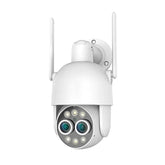





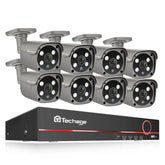

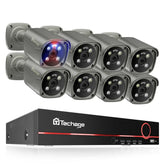
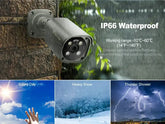


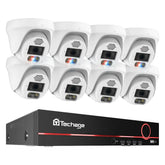
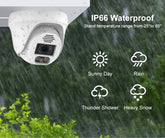








































































































1 comment
In my case one good IP PoE camera with PTZ is sufficient. Especially I will choose a PoE camera, because there is not power available close to the location of the camera. For the Ethernet connection I have available a WiFi router which has a some Ethernet ports too. What would be the best alternative to arrange power supply for the PoE camera? Should a purchase a small PoE router or would a PoE power injector work as a cheaper solution?